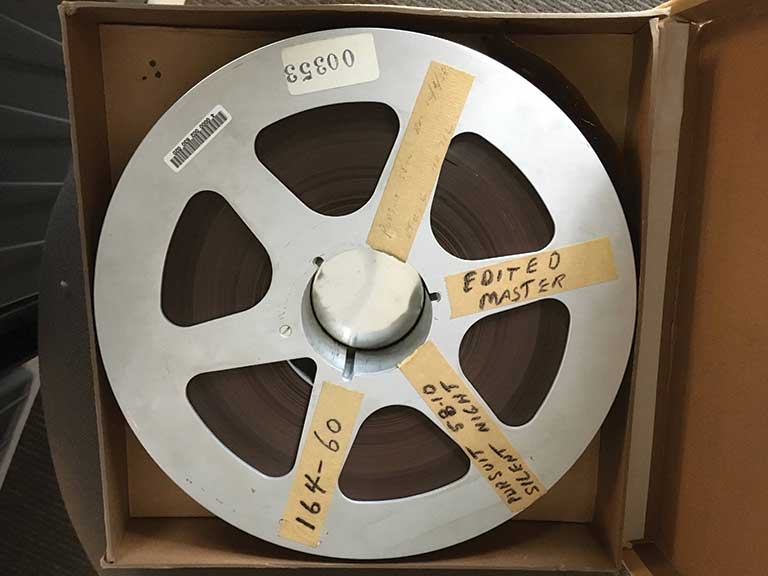About
Hundreds of thousands of archival audio, video, and film objects—many unique and some quite valuable—were stored across Indiana University (IU) in libraries, archives, academic centers, departments, and many other units. Some were in well-maintained spaces such as the Ruth Lilly Auxiliary Library Facility, but many others were moldering away in attics, old desk drawers, and forgotten shelves all over IU’s many campuses. Most time-based analog media formats are both actively degrading and sinking into obsolescence through a process that has been termed “degralescence.” It was only a matter of time before most of them would be too damaged to play back, or the machines capable of playing them back would be obsolete and hard to find in good working order.
MDPI’s Mike Casey coined the term ‘degralescence’ in 2011 to more vividly characterize these destructive forces.

In his October 2013 State of the University address, then–IU President Michael A. McRobbie announced the creation of the Media Digitization and Preservation Initiative (MDPI). MDPI’s mission was to digitize a large subset of these endangered items and make them available to scholars all over the world. President McRobbie cited as the foundation for this endeavor the three long-held missions of academia—the creation, dissemination, and preservation of knowledge. As an academic institution, it is IU’s duty to ensure the content contained on these fragile items is not lost forever.
MDPI served more than 70 IU units that held media collections across all campuses. It grew into a close collaboration of IU librarians and archiving specialists working with the internationally respected University Information Technology Services (UITS) storage and networking technicians at IU. The project also featured a close collaboration with a private vendor—Memnon Archiving Services—who completed most of the digitization in a co-located facility in the IU Innovation Center.
The project achieved the following results:
- Digitized 236,396 audio recordings (179,274 hours of content); 97,395 video recordings (116,428 hours); and 23,821 reels of film (7,277 hours)
- Developed and implemented a quality control program for all digitization work
- Built a post-processing system that automated the embedding of metadata, software-based quality control, the creation of derivatives, and the creation of preservation packages for long-term storage
- Created a database that tracked and managed the recordings through the digitization process
The Future
Digitization
The mission of MDPI continues with the creation of Audio-Video Preservation Services by IU Libraries and the ongoing work of the Indiana University Libraries Moving Image Archive.
Long-term preservation
Planning led by IU Libraries and UITS is underway to develop a digital preservation service to steward and preserve the more than 18 PB of data generated by MDPI. This data currently resides in IU’s Scholarly Data Archive
Access
Work to provide access to MDPI content continues at the various IU media-holding units, led by IU Libraries. These units are responsible for decisions on appropriate access to their holdings.
To enable robust discovery and access, IU Libraries is developing AMP, or Audiovisual Metadata Platform, an open source software system that enables the efficient generation of metadata to support discovery and use of digitized and born-digital audio and moving image collections.
Media Collections Online (MCO), IU’s streaming platform based on the IU Libraries-developed Avalon Media System, supports watching and listening to digitized media content. On MCO, you can find materials digitized through MDPI as well as through other external vendors and internal IU workflows.
Use the search bar on the top right to find specific titles. Or browse through titles using the filters on the left-hand side of the screen. Filtering by “Sound Recording” will display all accessible audio recordings. Filtering by “Moving Image” will display all accessible film/video records. Use additional filters like “Unit,” “Collection,” or “Physical Format” to help focus inquiry results.
As additional cataloging, copyright research, and editing is done on digitized files, more materials will be accessible on MCO. If interested in materials on a specific topic or from a specific collection, contact the individual IU library, archive, or other unit that holds and stewards the material. You can also contact IU Libraries to be appropriately directed.

